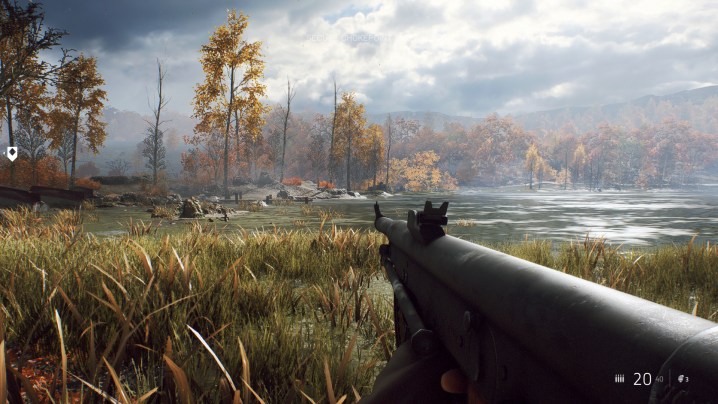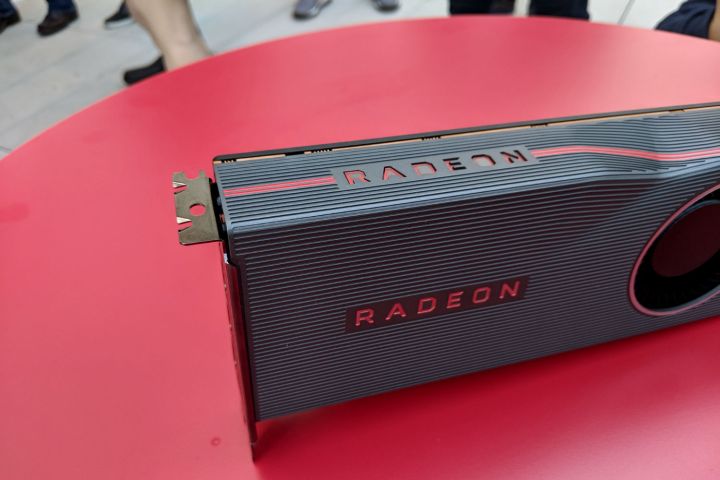Even with a small list of supporting games, ray tracing has become a focal feature of modern-day graphics cards. With a new, refreshed generation of Nvidia GPUs that support it, AMD’s lack of support is becoming more apparent.
Plans for the technology have seemingly conflicting statements, confusing non-stances, and a murky roadmap of when we can expect AMD to trace its first rays on a gamer’s PC.
We decided to sit down and dig into exactly what AMD has said on the matter and what we know about its future hardware plans. Just when can we expect AMD fans to be able to enjoy the kind of visual features that have been a Nvidia exclusive for the best part of a year?
Ray tracing for the masses

Following the surprise announcement of ray tracing technology by Nvidia — with its RTX Turing GPU debut in August 2018 — AMD’s response was lukewarm. Along with many other commenters at the time, the suggestion was that the technology wasn’t ready for the mainstream just yet. The price on the new RTX graphics cards certainly seemed to back up that theory.
In November 2018, David Wang, AMD’s senior vice president of engineering at the Radeon Technologies Group, told 4Gamer, “Utilization of ray tracing games will not proceed unless we can offer ray tracing in all product ranges from low end to high end.”
Although that statement wasn’t clear on whether it was the games or the hardware that AMD wanted to catch up to ray tracing before it would implement it, it did suggest AMD itself hadn’t invested yet. Just two months later, at CES 2019, AMD CEO Lisa Su told reporters that the company was “deep in development” on ray tracing technology.
It seems they’d been doing so for quite some time. A patent application came to light in July 2019, which pointed to AMD utilizing a hybrid hardware and software approach to ray tracing. This patent suggests that AMD’s plan for ray tracing involves leveraging bespoke hardware to accelerate it while performing the bulk of the work on more general hardware via software. This leveraging, it claims, makes it so that there isn’t too much of a performance hit, without requiring game developers to work with its precise definition of ray tracing rendering.
AMD can already do ray tracing
While AMD may be planning a new (or at least iterative) process for handling ray tracing, it’s arm’s length distancing from the topic on most fronts has been somewhat surprising. Most notably because AMD hardware can already do ray tracing. It showcased professionally-targeted, real-time ray tracing in the form of Radeon ProRender four months before Nvidia’s RTX reveal, but we didn’t hear much after that.
What was even more impressive, though, was that Crytek released its Neon Noir demo in May 2019, showcasing ray tracing running at a stable 30 frames per second at 1080p on an AMD Radeon Vega 56. Although that’s hardly a high frame rate, especially considering it’s for ray-traced reflections only, it shows that general computing power can be leveraged for ray tracing.
AMD hasn’t come out swinging with backdated ray tracing support for that “fine wine” approach that its GPUs so often enjoy. For that, we’ll need to look forward.
Navi, but not yet
When the desktop PC Navi RX 5700 XT and 5700 graphics cards were released in July 2019, many people assumed that ray tracing hardware from AMD was right around the corner. Unfortunately, this was not so, as ray tracing was not a feature that AMD had planned for these new cards — they didn’t have any dedicated hardware or additional headroom to handle it.
AMD’s first generation Navi, RDNA GPUs, just weren’t designed with ray tracing in mind, but their sequel will be. We know this because ray tracing is a critical component of the next generation of game consoles from Microsoft and Sony, and both systems will use a custom AMD RDNA2 graphics core alongside an AMD Zen 2 Ryzen CPU.
We expect to see the first RDNA2 desktop graphics cards appear before next-gen consoles, sometime in the latter half of 2020.
We still don’t know what guise the ray tracing support will take, but some form of hardware acceleration is likely.
Cloud power

At E3 2019, AMD revealed its ray tracing vision, which includes a series of steps and developmental milestones that it expects to hit on its road to ray tracing. Alongside hardware acceleration, AMD plans to leverage the power of cloud computing to make full-scene ray tracing a reality. It’s not yet clear how AMD will handle the combination of local and cloud rendering at the same time, though it could be done in a manner similar to Microsoft’s upcoming Flight Simulator (2020), which leverages cloud computing to render clouds.
Google Stadia may help pave the way for such technologies, too, and considering AMD hardware is at the heart of that venture, the red team could be at the forefront of such ongoing developments.
As recently as April 2020, posts on AMD’s Twitter account and industry rumors indicate they will indeed be rolling out ray tracing, but only on their line of Navi 2X RDNA2 graphics cards (AMD Navi 21, 22, and 23). However, further scuttlebutt suggests that more affordable options will be available, but again only on top-shelf Radeon RX graphics cards. The upcoming line of RDNA 2 GPUs promoted by AMD has been marketed with features like ray tracing with hardware acceleration and variable rate shading and is purpose-built for widespread industry adoption.
It’s certainly possible that this is in line with what AMD’s hybrid rendering that the patent discusses, leveraging bespoke hardware for some of it and a glut of general computing power for the rest, with the cloud providing the additional performance required to make that possible. AMD is looking to compete with rival products like NVIDIA’s GeForce, and since pairing with Sony and Microsoft to develop what may be the last generation of consoles as we know them, it may yet succeed.
When will AMD support ray tracing?

AMD’s version of ray tracing, be that dedicated hardware, cloud supported, or a combination of both, is coming in 2020. It will likely make its first appearance on dedicated graphics cards for desktop PCs a few weeks or months ahead of the next-generation console launch. Our best guess would be sometime in August, though it could be anytime between then and December, in reality.
Even with new-gen cards from AMD and Nvidia debuting in the latter half of 2020, though, it’s likely that ray tracing will remain a premium visual feature for gamers, at least for the time being. Gamers may need to choose between higher frame rates and resolutions or higher visual fidelity with fancy lighting effects. With AMD finally bringing its ray tracing vision to the public, we will likely see a much more competitive environment for ray tracing hardware, which is good for everyone.





